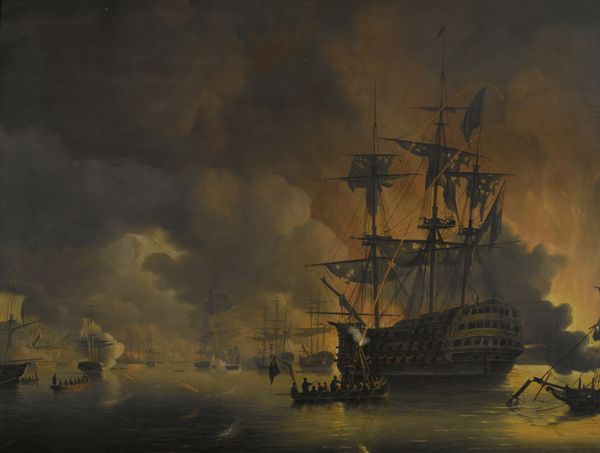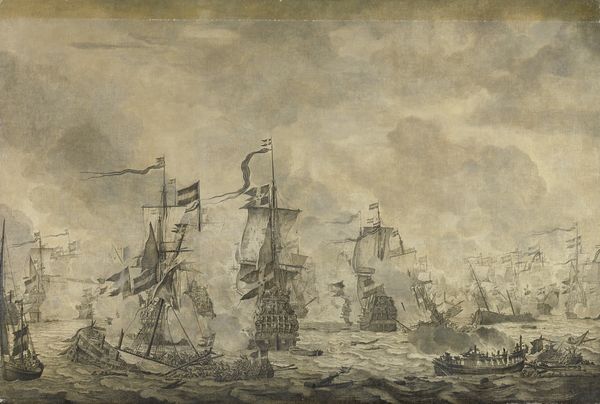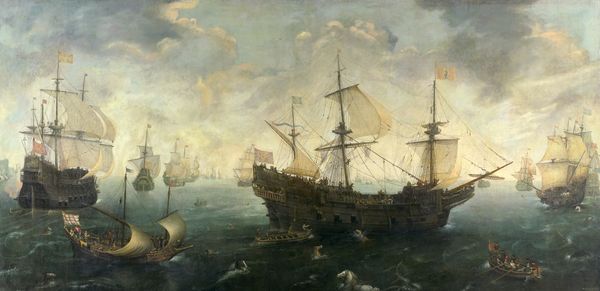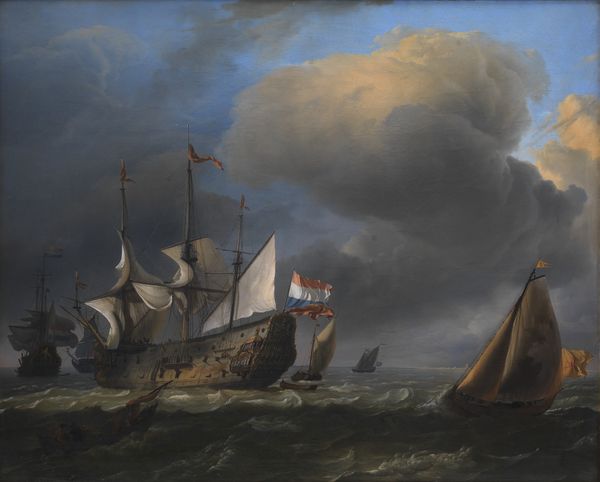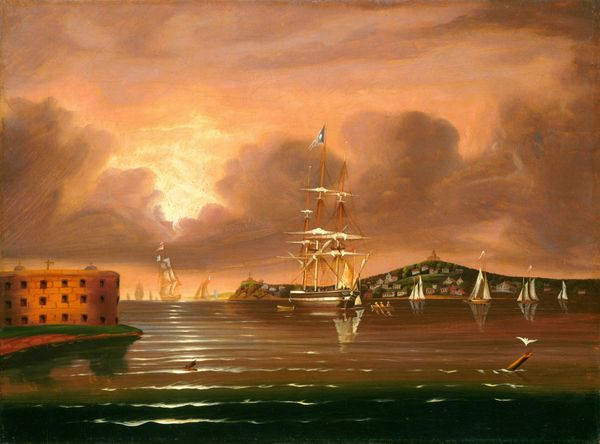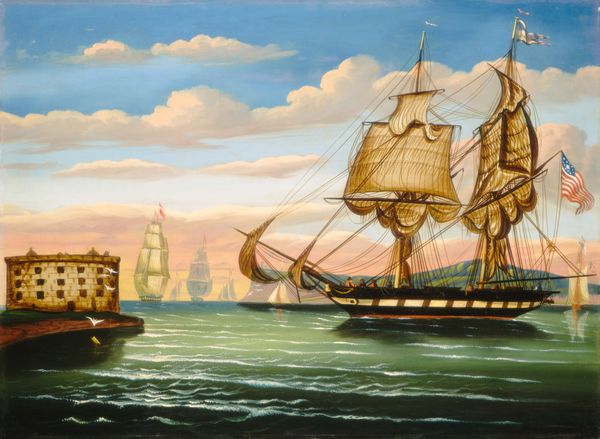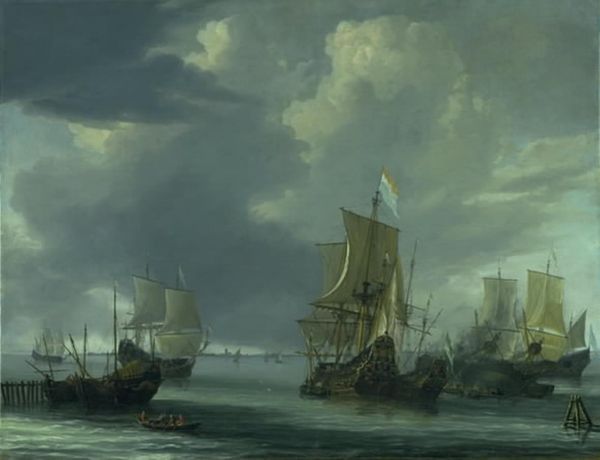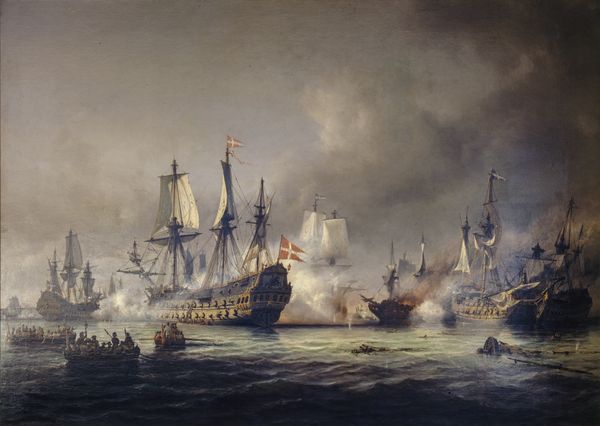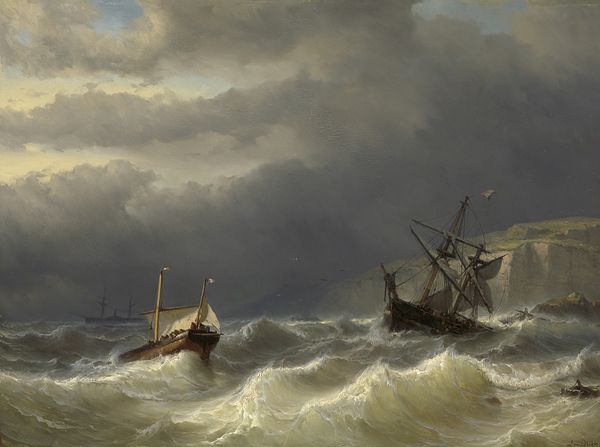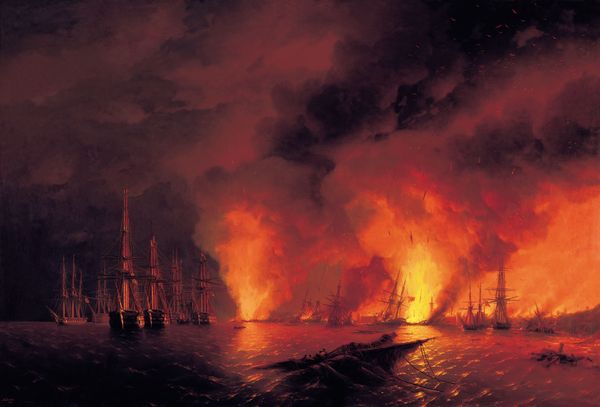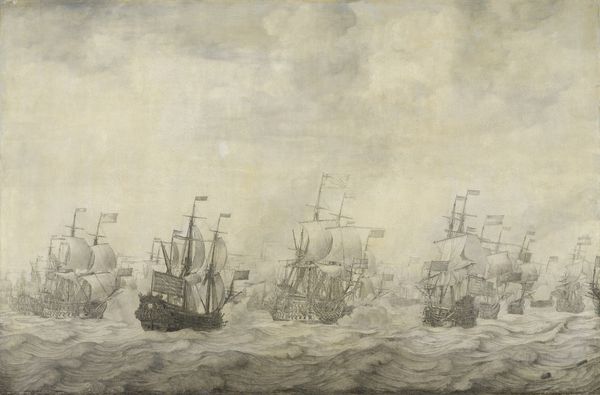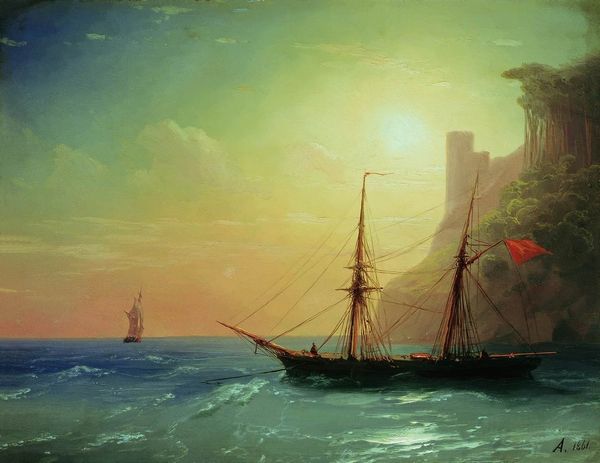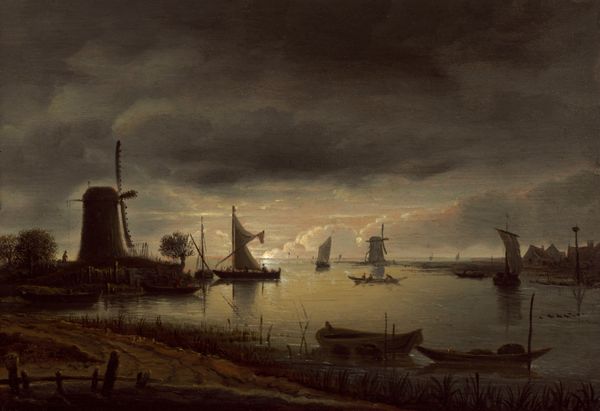![['The Anglo-Dutch Fleet under Lord Exmouth and Vice Admiral Jonkheer Theodorus Frederik van Capellen putting out the Algerian Strongholds, 27 August 1816', 'Four Episodes during the Presence of the Anglo-Dutch Fleet in the Bay of Algiers, 26 to 27 August 1816'] by Nicolaas Baur](/_next/image?url=https%3A%2F%2Fd2w8kbdekdi1gv.cloudfront.net%2FeyJidWNrZXQiOiAiYXJ0ZXJhLWltYWdlcy1idWNrZXQiLCAia2V5IjogImFydHdvcmtzLzBjNjQ2ZTI2LTBmNDQtNDQ3Ny05MWZlLTFlYmE2Y2YwMmU1OS8wYzY0NmUyNi0wZjQ0LTQ0NzctOTFmZS0xZWJhNmNmMDJlNTlfZnVsbC5qcGciLCAiZWRpdHMiOiB7InJlc2l6ZSI6IHsid2lkdGgiOiAxOTIwLCAiaGVpZ2h0IjogMTkyMCwgImZpdCI6ICJpbnNpZGUifX19&w=3840&q=75)
['The Anglo-Dutch Fleet under Lord Exmouth and Vice Admiral Jonkheer Theodorus Frederik van Capellen putting out the Algerian Strongholds, 27 August 1816', 'Four Episodes during the Presence of the Anglo-Dutch Fleet in the Bay of Algiers, 26 to 27 August 1816'] 1818
0:00
0:00
Dimensions: height 54 cm, width 75 cm
Copyright: Rijks Museum: Open Domain
Editor: Here we have Nicolaas Baur's oil painting from 1818, "The Anglo-Dutch Fleet putting out the Algerian Strongholds." It's quite dramatic – the smoke, the scale of the ships... What can you tell me about this work? Curator: Well, consider the materiality first. Oil paint allows Baur to achieve this smoky atmosphere, blurring the line between the natural world and the instruments of war. Think about where the materials originated. Were these pigments expensive? What kind of labor extracted these pigments? And who commissioned the artwork and why? Editor: So it's less about the heroic battle itself and more about the circumstances that made it possible? Curator: Precisely. The production of these vast ships, the iron for the cannons, the wood for the hulls. This represents an enormous consumption of resources, the labour of countless individuals channeled into a specific, brutal act. The artist, of course, is implicated too. Editor: It almost makes the painting itself complicit. Curator: It is a product, just like the ships. Its beauty and skill might even mask the violence it depicts. Who was the patron? What kind of person has access to art like this in the 1800s? Editor: Someone benefitting from all of that resource consumption, probably. So by focusing on materials, we expose this web of connections, not just the image of the battle itself. Curator: Indeed. Baur's skill is undeniable, but consider what it took, materially and socially, for this scene, this act of creation, to come into being. The labor embedded in these vessels is as important as the scene they perform. Editor: I never thought of it that way, considering a painting's origins and its materials to understand the full picture. Thank you! Curator: The point is that artistic representation is not divorced from material conditions; they’re fundamentally entwined.
Comments
No comments
Be the first to comment and join the conversation on the ultimate creative platform.
